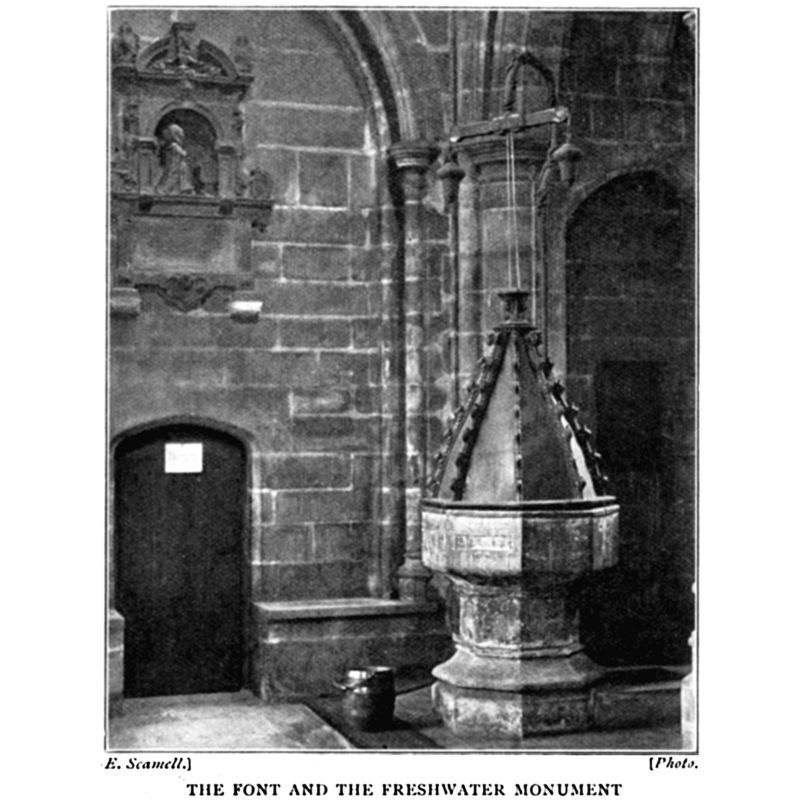London No. 15 / Smithfield

Image copyright © [in the public domain]
PD
Results: 3 records
LB01: design element - motifs - moulding
LID01: cleric - monk - head - 8
INFORMATION
FontID: 06073LON
Object Type: Baptismal Font1
Church/Chapel: Church of St. Bartholomew-the-Great
Church Patron Saints: St. Bartholomew
Country Name: England
Location: Greater London, South East
Directions to Site: In West Smithfield, just W of London Wall, N of Newgate St. (Barbican or Farringdon tube stations)
Font Location in Church: Inside the church
Century and Period: 15th century, Perpendicular
Church Notes: St. Bartholomew the Great is the only surviving part of a Norman priory and the oldest parish church of London -- film "Four Weddings and a Funeral" filmed here -- Lady Chapel used as printer's office; Benjamin Franklin worked here
Font Notes:
Click to view
Noted in Allen (1839?): "The font, which is situated at the base of the south-west pier of the transept, is a massive octangular basin on a pillar of the same form. It is devoid of ornament, but remarkable as the only ancient font in the city". Noted and illustrated in Worley (1908): "The font dates from the early fifteenth century, and is octagonal in shape, with a tall cover, crocketed at the angles, suspended on a swivel above it. The facets of the octagon are perfectly plain, but there is an oblong incision in one of them which looks very much like the matrix of a brass, or the seat of a sculptured panel, which has been removed. There is a traditional interest attaching to the font as that in which William Hogarth, the famous painter and satirist, was baptized. He was born in Bartholomew Close on 10th November, 1697, and his baptism is entered in the parish register on the 28th of 40 the same month […] It is recorded that the font had a narrow escape in the eighteenth century, when the Vestry ordered it to be removed for a new one, but fortunately the order was never carried out." Described in Blatch (1995) as "a plain stone 15th century octagonal font, one of the only two pre-Reformation examples left in London [the only medieval font in the city? cf. Index entry for London No. 21, Corpus Christi, for a font that may be 15th century, and for London No. 22, Stepney St Dunstan's, for a font claimed to be of an earlier date, perhaps Norman]. The cover, shaped like a pyramid, has eight carved ribs which terminate with heads of tonsured monks".
MEDIUM AND MEASUREMENTS
Material: stone
Font Shape: octagonal (mounted)
Basin Interior Shape: round
Basin Exterior Shape: octagonal
LID INFORMATION
Date: 15th century?
Material: wood, oak?
Apparatus: [cf. FontNotes]
Notes: ornamented with crockets and monk's heads [cf. FontNotes]
REFERENCES
Allen, Thomas, The History and Antiquities of London, Wsetminster, Southwark, and parts adjacent, London: published by George Virtue, 26 Ivy Lane, Paternoster Row, [1839?]
Blatch, Mervyn, Guide to London's churches (2. ed.), London: Constable, 1995
Worley, George, The Priory Church of St. Batholomew-the-Great, Smithfield: a short history of […], London: George Bell and Sons; Chiswick Press, Charles Whittingham and Co., 1908